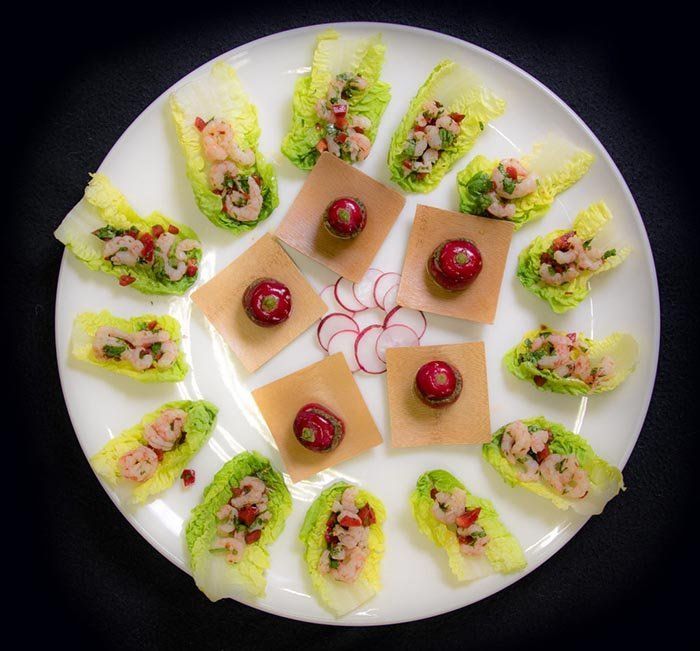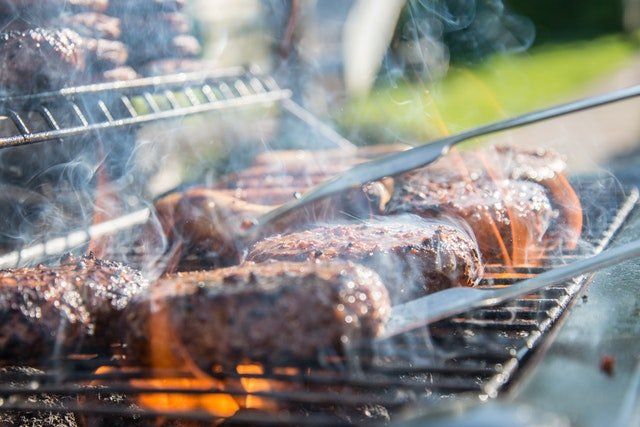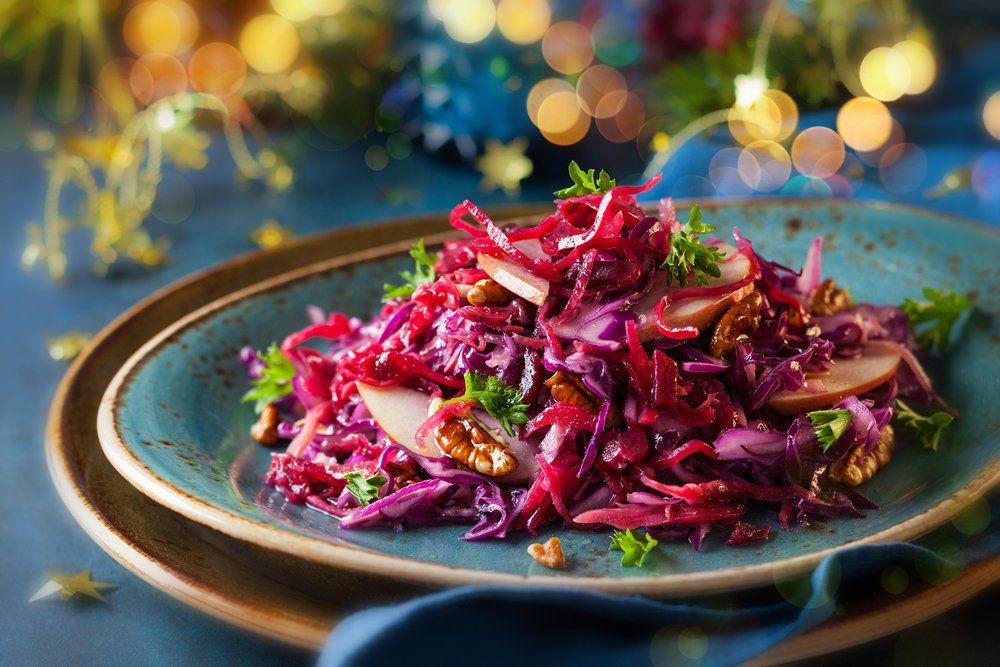Recipe and Tips for November
- By Sonya Meagor
- •
- 22 Nov, 2018
- •

With the shorter days and colder weather, at this time of year I'm thinking of roast dinner on a Sunday...…….a lovely bird with roast potatoes, parsnips, steamed greens, gravy and have you ever tried a roast onion? My Gran used to do them for us and ever since then I've always included them in my own roasts. They provide lovely sweet notes of flavour and you can add them into your gravy if you want to.
As it is now mid-November with Christmas decorations and festive food appearing on menus and in stores, we are also thinking of the expense at this time of year. And in terms of food, some are considering how to save some money, making everything go as far as you can (we should always be thinking of this of course).
Personally after a roast I use the carcass and bones to make a stock for another day. Any leftover chicken I use in a risotto. My top tip for leftover chicken is this; l leave it on the bone to keep it moist, then you want to use it take away from the carcass and put the bones into a pan - add some onion, carrot and a few herbs then water - bring to the boil then simmer and reduce by approximately half - this should give you a good tasting stock to add to a risotto rice dish. Alternatively you can keep it for another gravy. If you use all the meat in one sitting and don't need a stock - just remove the bones and break up the carcass and pop into a freezer bag for when you do.
When being thrifty with food cheaper cuts of meat are often talked about and the general rule of thumb is they either need a flash fry or long slow cooking. I love long and slow myself.
Here is the classic Beef en Daube - "proper" slow preparation and slow cooking but the results are fantastic as long as you are a patient cook! And you can always enjoy with a glass of red Burgundy or Beaujolais.
· 1.5kg beef brisket, trimmed of excess fat and cut into large chunks
· salt, to taste
· 2 large onions, finely chopped
· 4 carrots, peeled and cut into chunks
· 2 sticks celery, sliced
· 6 garlic cloves, finely chopped
· 1 bottle red wine
· 100ml brandy or cognac
· 50ml red wine vinegar
For the bouquet garnis
· 4 bay leaves
· 2 large sprigs thyme
· a few sprigs of parsley
· 2 pieces pared orange zest
· 4 cloves
· 1 tsp black peppercorns
· 2 cinnamon sticks
For the casserole
· 4 tbsp olive oil
· 150g bacon lardons
· 1 onion, finely chopped
· 2 tbsp tomato purée
· 600ml beef stock
· 150g black olives
Put the beef into a large fridge-friendly container. Sprinkle with salt and add all the marinade ingredients.
Divide the ingredients for the bouquet garnis in half and tie into two separate parcels of muslin. Add one of these to the marinade and set the other one aside. Cover and put in the fridge. Leave overnight.
For the casserole, drain the meat, reserving the liquid and the rest of the marinade ingredients. Pat the meat dry and brush off any garlic.
Heat half of the olive oil in a large frying pan and fry the meat in batches until well browned. Deglaze the base of the frying pan with a little of the marinade liquid and set aside.
In a large casserole, add the remaining olive oil. Add the bacon and fry on a high heat for a few minutes until crisp and brown. Add the onion and reduce the heat to medium. Fry for around 10 minutes, or until the onion has softened and lightly coloured. Stir in the tomato purée. Add the beef to the casserole and stir to coat.
Strain the marinade and pour over the liquid along with the deglazing liquid from the frying pan and the second bouquet garnis.
Bring to the boil and simmer until the volume of liquid has reduced by around a third.
Add enough beef stock so that the beef is just covered. Return to the boil, then turn down the heat to low. Cover, and simmer for around three hours.
If you are able to, leave overnight – cool and leave in the fridge to chill. Once chilled, it will make skimming off any fat much easier. Otherwise, just skim off some of the fat, which will collect at the top.
Add the olives, then simmer uncovered for a further hour to reduce down the sauce. Serve with rice.
Enjoy!

The Millfield theatre is home to eco cuisine and the events have been held here too for that reason.
OLIO (the food app) and NLWA (North London Waste Authority) CROPDROP (local Haringey boxed fruit/vegetable scheme) plus our very own Sonya Meagor (eco cuisine) are confirmed as our first speakers and we're For each event, we support a North London based charity related to the event theme - for this event we're delighted to collaborate with The Felix Project .
TICKETS
https://www.eventbrite.co.uk/e/sustainable-food-packaging-tickets-61490383392?aff=website


With less than two weeks until Christmas and the holidays nearly upon us, the shops are stocked with delicious festive treats and people are already stocking up on Christmas food fit for a feast or two.
But, just because it is Christmas doesn’t mean we should not consider what is in season and keeping sustainability at the forefront of our minds.
So, what is in season over December and the winter seasons in Britain? Well, thankfully many of the Christmas time favourites are favourites for a reason – they’re traditionally easily grown and sourced in the U.K. over winter. Cabbage, sprouts, potatoes and onions, celeriac, celery and carrots as well as parsnip and swede are all in season this time of year. Not forgetting chestnuts, beef and venison and even guinea fowl too.
So roast dinners with all the trimmings can be environmentally friendly! Of course clementines, pomegranates and dates are seasonal favourites too and these are obviously not sourced locally.
Whatever you buy and eat over the festive season, remember to consciously consume – making informed and conscious decisions about what you buy and eat.
In the lead-up to the Christmas break we enjoy hearty, warming foods, keeping us warm in the cold weather and suitably fuelled over this busy season.
We enjoy Rumbledethumps – for those who haven’t heard of it, it is the Scottish equivalent of bubble and squeak as it is often made with leftovers, though it isn’t usually fried. It is a lovely filling dish served as a side or when served with a nice piece of fish or chicken breast can even be a substantial main meal.
Rumbledethumps
550g large potatoes,
350g swede
60g unsalted butter
250g kale, finely sliced
1 small onion diced
Sprigs of thyme
25g cheddar cheese, grated
Preheat the oven to 180C/350F/Gas 4.
Peel and chop the potatoes and the swede and chop into large chunks. Next, boil in a saucepan tender. Drain and return to the pan.
Heat three quarters of the butter in a pan on medium low heat and cook the kale and the onions for a few minutes, until the kale is tender and onions lightly browned.
Add the kale and onions to the pan with the potatoes and swede then add the remaining butter and mash together. Season, to taste, with salt and freshly ground black pepper.
Place the mashed medley into an ovenproof dish and top with the cheese. Cover with a lid and bake in the oven for about 20 minutes, then remove the lid and continue to cook for a further 15 minutes, or until piping hot and golden-brown on top. Serve with fresh thyme.
What winter dishes keep you going in the lead-up to the Christmas break? Let us know in the comments.








